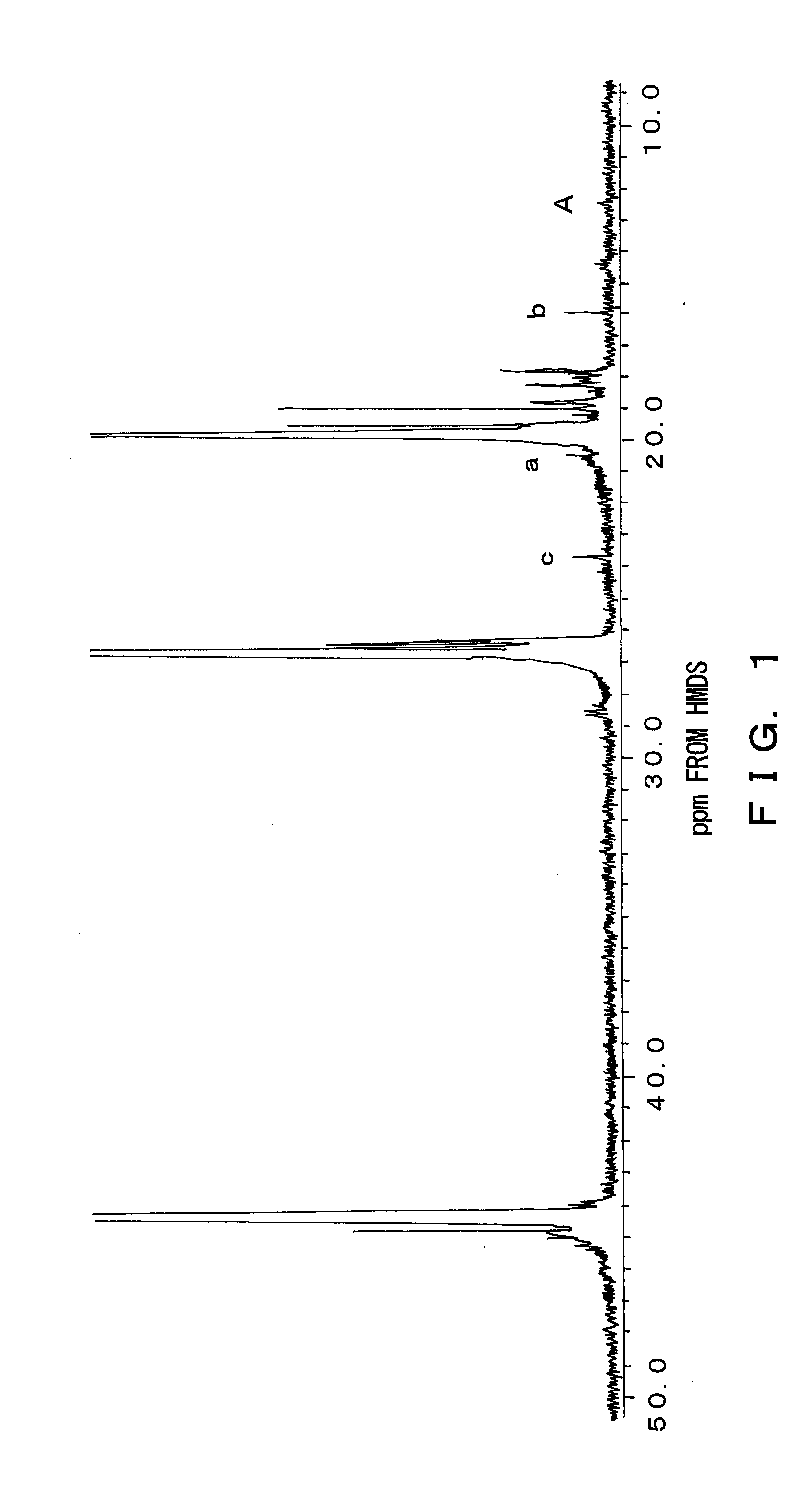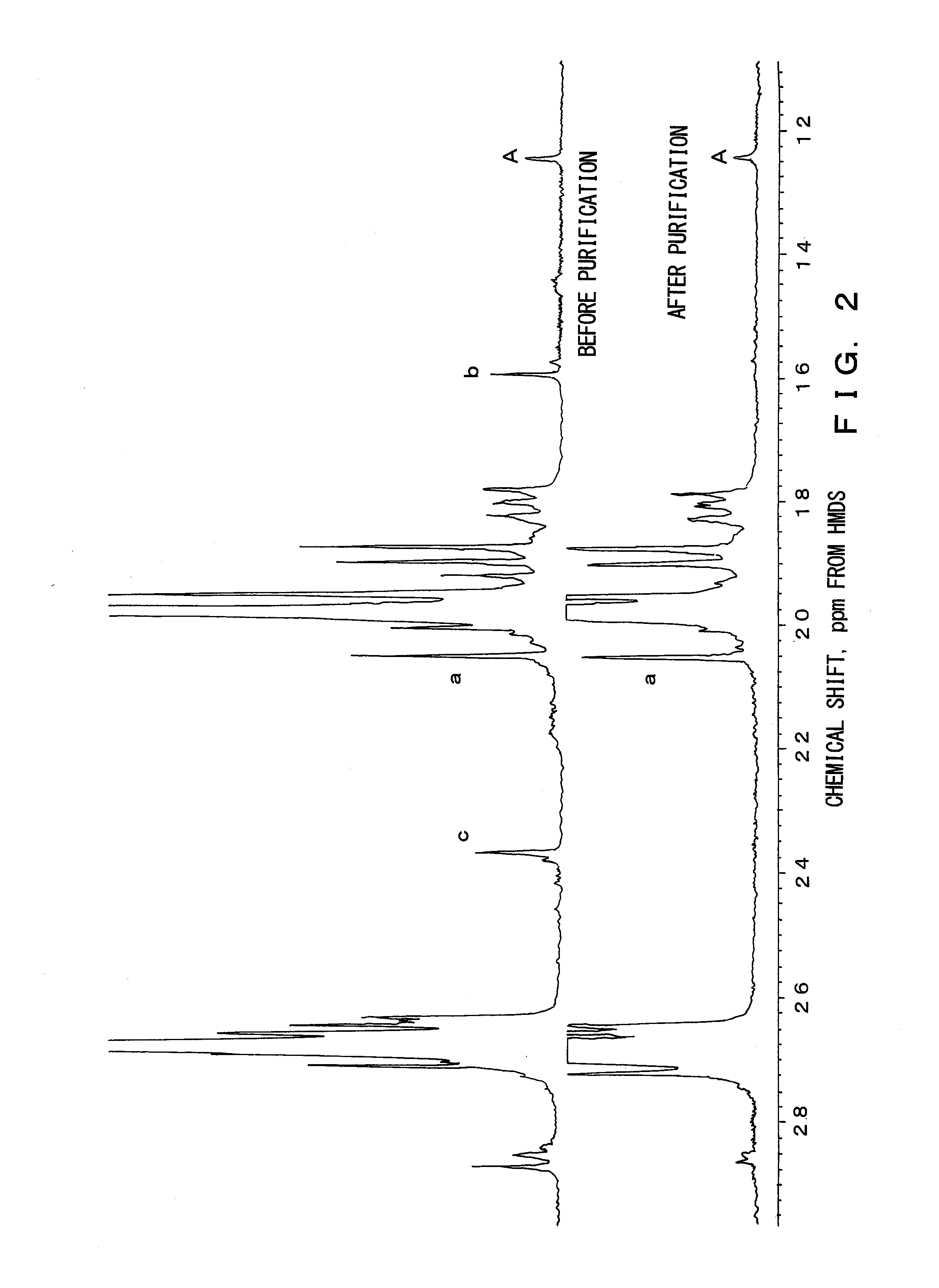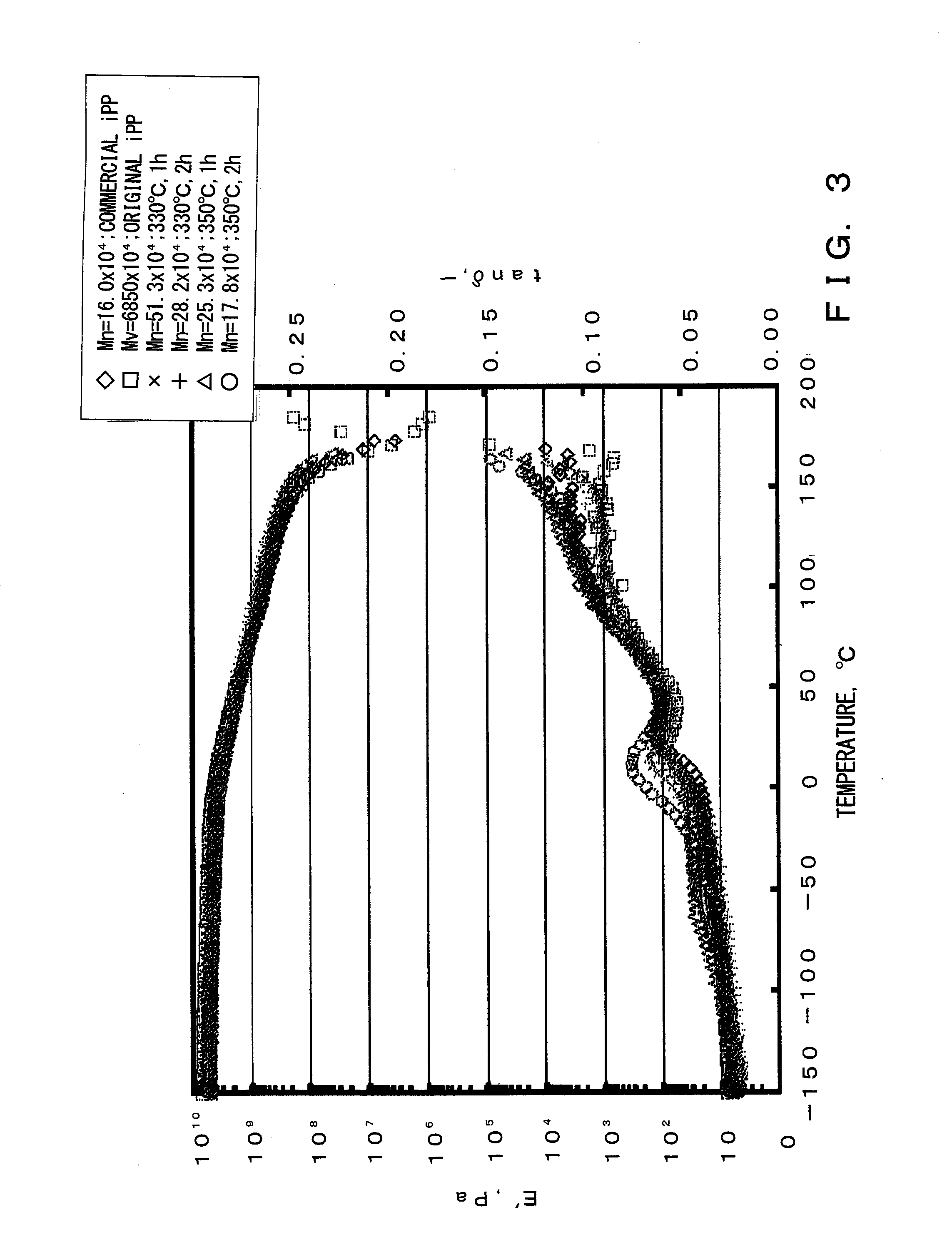Polyolefin Having Terminal Double Bond and Method of Producing the Same
a technology of polyolefin and terminal double bond, which is applied in the field of new polyolefin having a terminal double bond, can solve the problems of insufficient display of the bulk property of the polymer, and the difficulty of introducing a functional group to a specific position in the polymer chain, and achieve good reactivity
- Summary
- Abstract
- Description
- Claims
- Application Information
AI Technical Summary
Benefits of technology
Problems solved by technology
Method used
Image
Examples
example 1
[0045]A small-sized thermal degradation apparatus made of glass was used as a thermal degradation apparatus. 5 g of isotactic polypropylene, which is Mw=68,500,000 converted in viscosity, was placed in a reactor, and with a system being depressurized to 2 mmHg after nitrogen purging, melted by heating the reactor to 200° C. Thereafter, the reactor was dipped into a metal bath set at 370° C. and thermal degradation was performed. During the thermal degradation, the system was kept at a reduced pressure state of about 2 mmHg and melted polymer was stirred by bubbling with nitrogen gas discharged from a capillary introduced therein. After one hour, the reactor was removed from the metal bath and cooled to room temperature. Thereafter, the reaction system was brought to normal pressure. The residue in the reactor was dissolved in heat xylene and thereafter dropped in methanol and purified by reprecipitation. The obtained polymer had a yield of 96%, a number average molecular weight (Mn)...
example 2
[0047]In a method similar to Example 1, reaction was carried out with the thermal degradation temperature being changed from 370° C. to 350° C. The obtained polymer had a yield of 99%, a number average molecular weight (Mn) of 253,000 and a polydispersity index (Mw / Mn) of 3.1.
example 3
[0048]In a method similar to Example 2, reaction was carried out with the reaction time being changed from one hour to two hours. The obtained polymer had a yield of 99%, a number average molecular weight (Mn) of 178,000, and a polydispersity index (Mw / Mn) of 2.9.
PUM
| Property | Measurement | Unit |
|---|---|---|
| molecular weight distribution | aaaaa | aaaaa |
| molecular weight distribution | aaaaa | aaaaa |
| polydispersity index | aaaaa | aaaaa |
Abstract
Description
Claims
Application Information
 Login to View More
Login to View More - R&D
- Intellectual Property
- Life Sciences
- Materials
- Tech Scout
- Unparalleled Data Quality
- Higher Quality Content
- 60% Fewer Hallucinations
Browse by: Latest US Patents, China's latest patents, Technical Efficacy Thesaurus, Application Domain, Technology Topic, Popular Technical Reports.
© 2025 PatSnap. All rights reserved.Legal|Privacy policy|Modern Slavery Act Transparency Statement|Sitemap|About US| Contact US: help@patsnap.com



